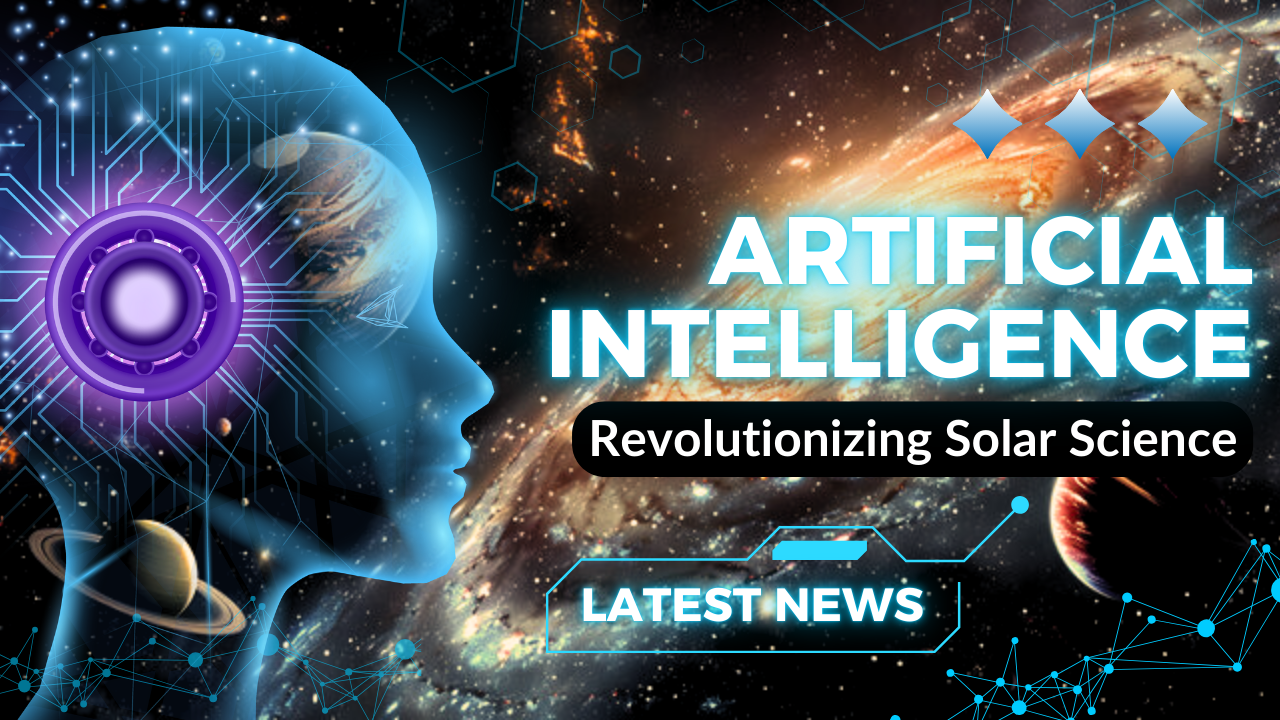How AI is Helping Scientists Unlock the Sun’s Deepest Secrets
The Problem: A Gap in Solar Data
For centuries, humans have been observing the sun, trying to understand its behavior, cycles, and impact on our solar system. However, the way we study the sun has changed dramatically with technology.
In the past, scientists relied on low-quality tools—basic telescopes, hand-drawn sunspot records, and early photographic plates. These methods gave us descriptive data, but not the high-resolution images we have today.
Now, with advanced telescopes, satellites, and AI-powered instruments, we capture the sun in unprecedented detail. But here’s the problem:
🔹 Old data ≠ New data – They don’t match in quality, resolution, or format.
🔹 Incompatible records – We can’t directly compare sunspots from the 1800s with today’s ultra-HD solar images.
🔹 Missing long-term trends – To study solar cycles (like the 11-year sunspot cycle), we need consistent data over centuries, not just decades.
This mismatch made it hard to track the sun’s evolution accurately. Scientists needed a way to bridge the gap between old and new observations.
The AI Solution: Turning Blurry Images into Clear Data
Artificial Intelligence (AI) has stepped in to solve this problem. Researchers have trained neural networks to:
- Learn from high-quality modern images (like those from NASA’s Solar Dynamics Observatory).
- Understand how old instruments “distorted” images (blurriness, noise, missing details).
- Reverse-engineer low-quality images to predict what they would look like with today’s tech.
How It Works
The AI uses a two-step process:
- “Damage” Simulation – The AI takes sharp, modern images and artificially degrades them to match old telescope quality.
- “Repair” Training – Another AI model learns to undo the damage, converting blurry old images into high-quality versions.
This way, historical solar images (even those from the 19th century) can be enhanced to match today’s standards—without losing real solar features.
Why This Matters
✅ Long-Term Solar Studies – Now, scientists can analyze 200+ years of sunspot data as if it were all captured with modern telescopes.
✅ Better Predictions – Helps in forecasting solar storms, flares, and space weather more accurately.
✅ Universal Solar Language – AI creates a standardized way to compare past and future solar observations.
As Tatiana Podladchikova, a researcher involved in the study, said:
“Our work goes beyond enhancing old images—it’s about creating a universal language to study the sun’s evolution across time.”
Real-World Impact
🔹 Sharper Sunspot Images – AI improved magnetic field maps of sunspots from old missions like SOHO (Solar and Heliospheric Observatory).
🔹 Far-Side Sun Estimates – AI even helped predict magnetic activity on the sun’s far side, which we can’t directly observe.
🔹 Future-Proofing Solar Science – New telescopes will keep coming, but AI ensures all past data remains useful.
Final Thoughts
AI isn’t just about fancy tech—it’s saving decades of solar research from becoming obsolete. By “translating” old data into modern standards, scientists can now:
🌞 Study the sun’s behavior over centuries, not just recent decades.
🌞 Make more accurate space weather forecasts (important for satellites & astronauts).
🌞 Unlock hidden patterns in solar cycles that were previously invisible.
This breakthrough shows how AI + astronomy can revolutionize our understanding of the universe—one sunspot at a time!
Sources & Further Reading:
Key Takeaways
✔ Old solar data was too blurry to compare with modern images.
✔ AI now enhances historical observations to match today’s quality.
✔ This helps track long-term solar changes (like sunspot cycles).
✔ Better data = better space weather predictions.

